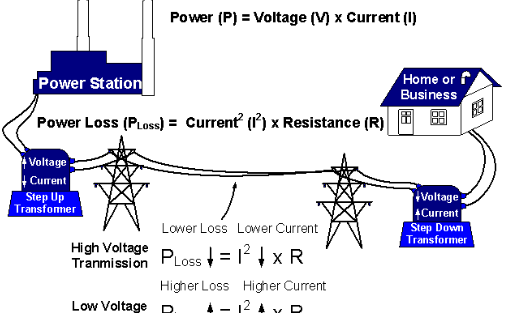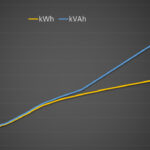What is Loss of Units?
Loss of units in electricity typically refers to the amount of energy lost as heat when electrical power is transmitted over a distance through a wire or cable.
This loss occurs due to the resistance of the conductor, which causes some of the electrical energy to be converted into heat instead of being delivered to the intended destination. The amount of energy lost depends on various factors such as the length and thickness of the wire, the material it is made of, and the amount of current flowing through it.
To reduce the loss of units during transmission, electricity is usually transmitted at high voltages to minimize the current flowing through the wires. This is because the power loss in the wire is proportional to the square of the current flowing through it, so reducing the current can significantly reduce the power loss.
Overall, loss of units can be a significant issue in electricity transmission, and efforts are continuously made to improve the efficiency of the system to reduce the amount of energy wasted.
How can we calculate Loss of units?
The calculation of loss of units in electricity transmission depends on various factors such as the length and thickness of the wire, the material it is made of, the amount of current flowing through it, and the distance traveled.
One way to calculate the loss of units is to use Ohm’s law, which relates the voltage, current, and resistance in a circuit. The power loss due to the resistance of the wire can be calculated using the formula:
Power Loss = I^2 x R
where I is the current flowing through the wire, R is the resistance of the wire, and “^2” means “squared.”
The total power delivered to the load can be calculated by multiplying the voltage and current at the load, which is given by:
Power Delivered = V x I
The loss of units can then be calculated as the difference between the power delivered and the power lost, which is:
Loss of Units = Power Delivered – Power Loss
It is important to note that the calculation of loss of units can be complex and may require consideration of various other factors such as the power factor, which measures the efficiency of the energy transfer. Therefore, it is recommended to consult a qualified electrical engineer or use specialized software for accurate calculations.
What are the preventation techniques to avoid Loss of units?
There are several prevention techniques to avoid loss of units in electricity transmission. Some of them are:
- Use high voltage transmission: As I mentioned earlier, power loss in the wire is proportional to the square of the current flowing through it. Therefore, electricity is usually transmitted at high voltages to minimize the current and hence reduce the power loss.
- Improve the efficiency of transformers: Transformers are used to step up or step down the voltage of the electricity during transmission. Improving the efficiency of transformers can help reduce power loss.
- Use high-efficiency conductors: Using conductors with low resistance and high efficiency can reduce power loss. For example, copper is a better conductor than aluminum, so using copper conductors can reduce power loss.
- Reduce the distance of transmission: Power loss increases with the distance of transmission. Therefore, reducing the distance of transmission can help reduce power loss.
- Improve power factor: Power factor is a measure of the efficiency of energy transfer. Improving the power factor can help reduce power loss.
- Reduce load on the system: Reducing the load on the system can help reduce power loss. This can be done by using energy-efficient devices and reducing unnecessary energy consumption.
Overall, these prevention techniques can help reduce loss of units in electricity transmission and improve the efficiency of the system.





